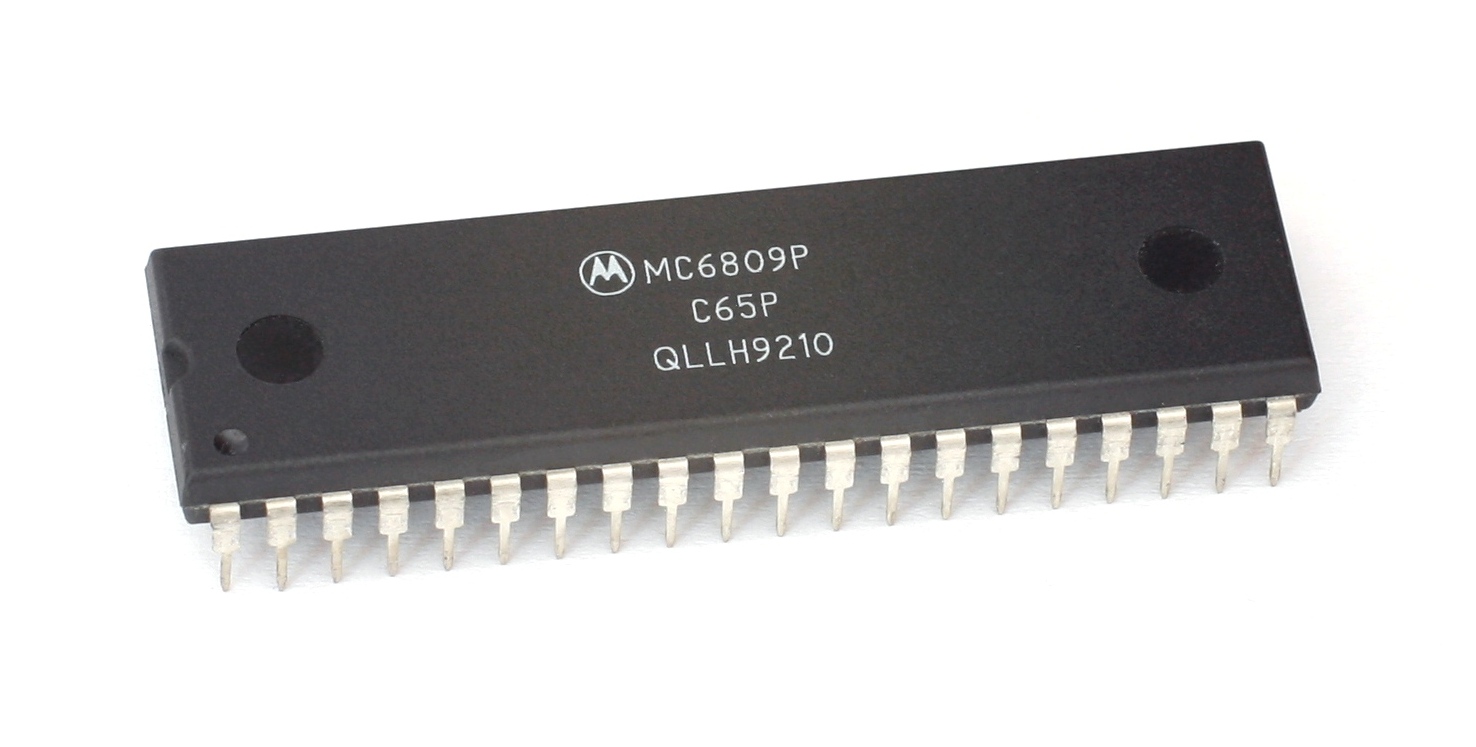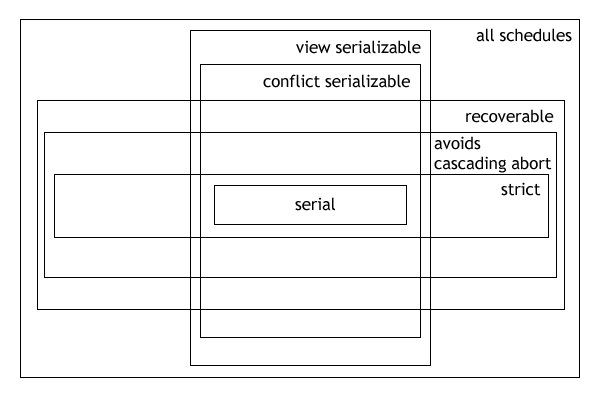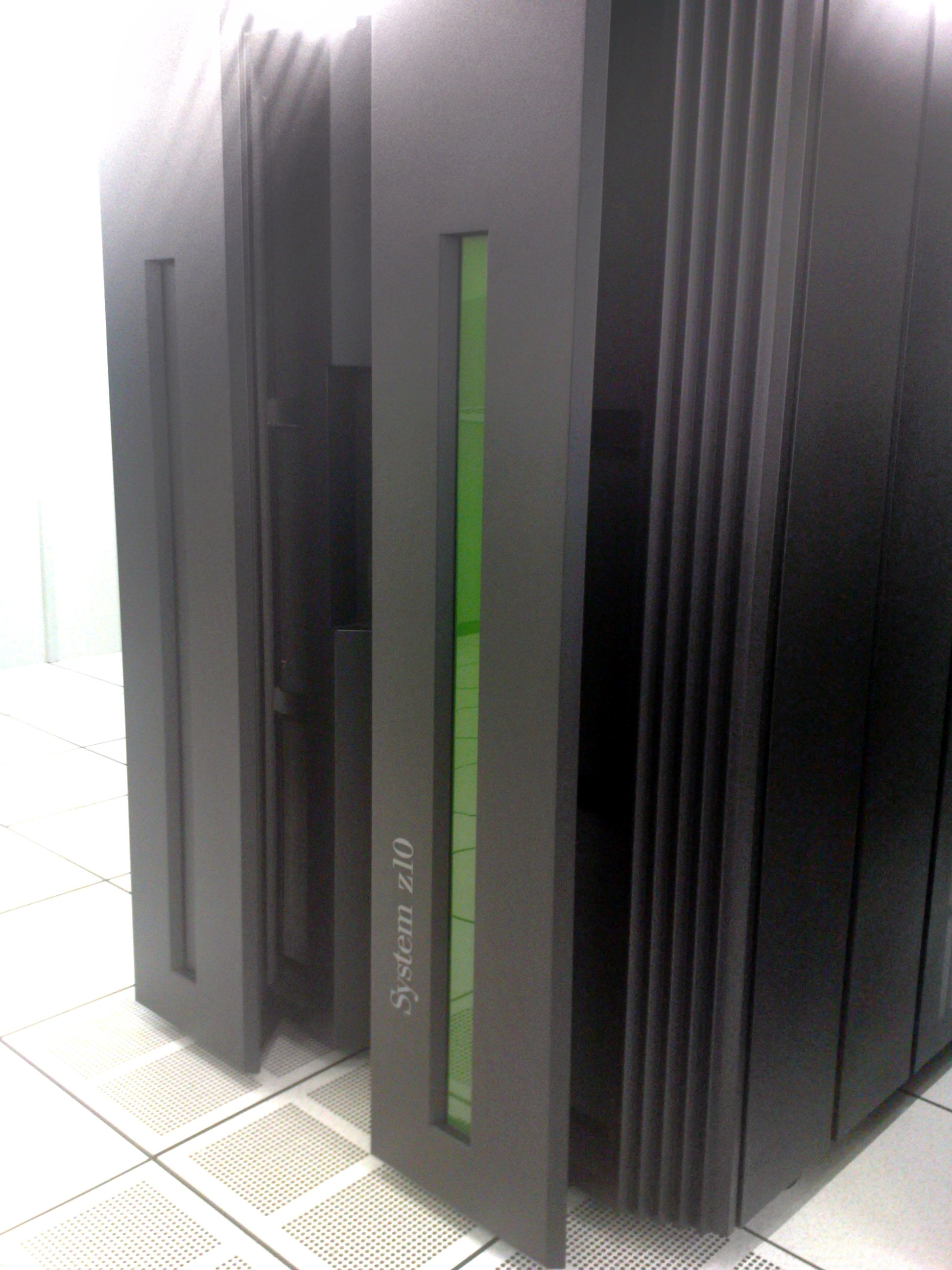|
Interrupt Service Routine
In computer systems programming, an interrupt handler, also known as an interrupt service routine or ISR, is a special block of code associated with a specific interrupt condition. Interrupt handlers are initiated by hardware interrupts, software interrupt instructions, or software exceptions, and are used for implementing device drivers or transitions between protected modes of operation, such as system calls. The traditional form of interrupt handler is the hardware interrupt handler. Hardware interrupts arise from electrical conditions or low-level protocols implemented in digital logic, are usually dispatched via a hard-coded table of interrupt vectors, asynchronously to the normal execution stream (as interrupt masking levels permit), often using a separate stack, and automatically entering into a different execution context (privilege level) for the duration of the interrupt handler's execution. In general, hardware interrupts and their handlers are used to handle high-pri ... [...More Info...] [...Related Items...] OR: [Wikipedia] [Google] [Baidu] |
Systems Programming
Systems programming, or system programming, is the activity of programming computer system software. The primary distinguishing characteristic of systems programming when compared to application programming is that application programming aims to produce software which provides services to the user directly (e.g. word processor), whereas systems programming aims to produce software and software platforms which provide services to other software, are performance constrained, or both (e.g. operating systems, computational science applications, game engines, industrial automation, and software as a service applications). Systems programming requires a great degree of hardware awareness. Its goal is to achieve efficient use of available resources, either because the software itself is performance critical or because even small efficiency improvements directly transform into significant savings of time or money. Overview The following attributes characterize systems programming: * The ... [...More Info...] [...Related Items...] OR: [Wikipedia] [Google] [Baidu] |
Motorola 6809
The Motorola 6809 ("''sixty-eight-oh-nine''") is an 8-bit microprocessor with some 16-bit features. It was designed by Motorola's Terry Ritter and Joel Boney and introduced in 1978. Although source compatible with the earlier Motorola 6800, the 6809 offered significant improvements over it and 8-bit contemporaries like the MOS Technology 6502, including a hardware multiplication instruction, 16-bit arithmetic, system and user stack registers allowing re-entrant code, improved interrupts, position-independent code and an orthogonal instruction set architecture with a comprehensive set of addressing modes. Among the most powerful 8-bit processors of its era, it was also much more expensive. In 1980 a 6809 in single-unit quantities was compared to for a Zilog Z80 and for a 6502. It was launched when a new generation of 16-bit processors were coming to market, like the Intel 8086, and 32-bit designs were on the horizon, including Motorola's own 68000. It was not feature competitiv ... [...More Info...] [...Related Items...] OR: [Wikipedia] [Google] [Baidu] |
Jitter
In electronics and telecommunications, jitter is the deviation from true periodicity of a presumably periodic signal, often in relation to a reference clock signal. In clock recovery applications it is called timing jitter. Jitter is a significant, and usually undesired, factor in the design of almost all communications links. Jitter can be quantified in the same terms as all time-varying signals, e.g., root mean square (RMS), or peak-to-peak displacement. Also, like other time-varying signals, jitter can be expressed in terms of spectral density. Jitter period is the interval between two times of maximum effect (or minimum effect) of a signal characteristic that varies regularly with time. Jitter frequency, the more commonly quoted figure, is its inverse. ITU-T G.810 classifies jitter frequencies below 10 Hz as wander and frequencies at or above 10 Hz as jitter. Jitter may be caused by electromagnetic interference and crosstalk with carriers of other signals. Jitte ... [...More Info...] [...Related Items...] OR: [Wikipedia] [Google] [Baidu] |
Schedule (computer Science)
In the fields of databases and transaction processing (transaction management), a schedule (or history) of a system is an abstract model to describe execution of transactions running in the system. Often it is a ''list'' of operations (actions) ordered by time, performed by a set of transactions that are executed together in the system. If the order in time between certain operations is not determined by the system, then a ''partial order'' is used. Examples of such operations are requesting a read operation, reading, writing, aborting, committing, requesting a lock, locking, etc. Not all transaction operation types should be included in a schedule, and typically only selected operation types (e.g., data access operations) are included, as needed to reason about and describe certain phenomena. Schedules and schedule properties are fundamental concepts in database concurrency control theory. Formal description The following is an example of a schedule: ;D In this example, the ... [...More Info...] [...Related Items...] OR: [Wikipedia] [Google] [Baidu] |
Context Switch
In computing, a context switch is the process of storing the state of a process or thread, so that it can be restored and resume execution at a later point, and then restoring a different, previously saved, state. This allows multiple processes to share a single central processing unit (CPU), and is an essential feature of a multitasking operating system. The precise meaning of the phrase "context switch" varies. In a multitasking context, it refers to the process of storing the system state for one task, so that task can be paused and another task resumed. A context switch can also occur as the result of an interrupt, such as when a task needs to access disk storage, freeing up CPU time for other tasks. Some operating systems also require a context switch to move between user mode and kernel mode tasks. The process of context switching can have a negative impact on system performance. Cost Context switches are usually computationally intensive, and much of the design of opera ... [...More Info...] [...Related Items...] OR: [Wikipedia] [Google] [Baidu] |
Deferred Procedure Call
A Deferred Procedure Call (DPC) is a Microsoft Windows operating system mechanism which allows high-priority tasks (e.g. an interrupt handler) to defer required but lower-priority tasks for later execution. This permits device drivers and other low-level event consumers to perform the high-priority part of their processing quickly, and schedule non-critical additional processing for execution at a lower priority. DPCs are implemented by DPC objects which are created and initialized by the kernel when a device driver or some other kernel mode program issues DPC requests. DPC requests are added to the end of a DPC queue. Each processor has a separate DPC queue. DPCs have three priority levels: low, medium, and high. By default, all DPCs are set to medium priority. When Windows drops to an IRQL of Dispatch/DPC level, it checks the DPC queue for any pending DPCs and executes them until the queue is empty or some other interrupt with a higher IRQL occurs. For example, when the clock i ... [...More Info...] [...Related Items...] OR: [Wikipedia] [Google] [Baidu] |
DESQview
DESQview (DV) is a text mode multitasking operating environment developed by Quarterdeck Office Systems which enjoyed modest popularity in the late 1980s and early 1990s. Running on top of DOS, it allows users to run multiple programs concurrently in multiple windows. Desq Quarterdeck's predecessor to DESQview was a task switching product called Desq (shipped late April or May 1984) which allows users to switch between running programs. Quarterdeck revamped its package, bringing multitasking in, and adding TopView compatibility. DESQview was released in July 1985, four months before Microsoft released the first version of Windows. It was widely thought to be the first program to bring multitasking and windowing capabilities to DOS, but in fact there was a predecessor, IBM TopView, which shipped March 1985, from which DESQview inherited the pop-up menu. Under DESQview, well-behaved DOS programs can be run concurrently in resizable, overlapping windows (something the first vers ... [...More Info...] [...Related Items...] OR: [Wikipedia] [Google] [Baidu] |
Z/OS
z/OS is a 64-bit operating system for IBM z/Architecture mainframes, introduced by IBM in October 2000. It derives from and is the successor to OS/390, which in turn was preceded by a string of MVS versions.Starting with the earliest: * OS/VS2 Release 2 through Release 3.8 * MVS/System Extensions (MVS/SE) * MVS/System Product (MVS/SP) Version 1 * MVS/System Product Version 2 (MVS/Extended Architecture, MVS/XA) * MVS/System Product Version 3 (MVS/Enterprise Systems Architecture, MVS/ESA) * MVS/ESA SP Version 4 * MVS/ESA SP Version 5 Like OS/390, z/OS combines a number of formerly separate, related products, some of which are still optional. z/OS has the attributes of modern operating systems, but also retains much of the older functionality originated in the 1960s and still in regular use—z/OS is designed for backward compatibility. Major characteristics z/OS supportsSome, e.g., TSO/E, are bundled with z/OS, others, e.g.,CICS, are separately priced. stable mainframe fac ... [...More Info...] [...Related Items...] OR: [Wikipedia] [Google] [Baidu] |
Microsoft Windows
Windows is a group of several proprietary graphical operating system families developed and marketed by Microsoft. Each family caters to a certain sector of the computing industry. For example, Windows NT for consumers, Windows Server for servers, and Windows IoT for embedded systems. Defunct Windows families include Windows 9x, Windows Mobile, and Windows Phone. The first version of Windows was released on November 20, 1985, as a graphical operating system shell for MS-DOS in response to the growing interest in graphical user interfaces (GUIs). Windows is the most popular desktop operating system in the world, with 75% market share , according to StatCounter. However, Windows is not the most used operating system when including both mobile and desktop OSes, due to Android's massive growth. , the most recent version of Windows is Windows 11 for consumer PCs and tablets, Windows 11 Enterprise for corporations, and Windows Server 2022 for servers. Genealogy By marketing ... [...More Info...] [...Related Items...] OR: [Wikipedia] [Google] [Baidu] |
MacOS
macOS (; previously OS X and originally Mac OS X) is a Unix operating system developed and marketed by Apple Inc. since 2001. It is the primary operating system for Apple's Mac computers. Within the market of desktop and laptop computers it is the second most widely used desktop OS, after Microsoft Windows and ahead of ChromeOS. macOS succeeded the classic Mac OS, a Mac operating system with nine releases from 1984 to 1999. During this time, Apple cofounder Steve Jobs had left Apple and started another company, NeXT, developing the NeXTSTEP platform that would later be acquired by Apple to form the basis of macOS. The first desktop version, Mac OS X 10.0, was released in March 2001, with its first update, 10.1, arriving later that year. All releases from Mac OS X 10.5 Leopard and after are UNIX 03 certified, with an exception for OS X 10.7 Lion. Apple's other operating systems (iOS, iPadOS, watchOS, tvOS, audioOS) are derivatives of macOS. A promi ... [...More Info...] [...Related Items...] OR: [Wikipedia] [Google] [Baidu] |
Unix
Unix (; trademarked as UNIX) is a family of multitasking, multiuser computer operating systems that derive from the original AT&T Unix, whose development started in 1969 at the Bell Labs research center by Ken Thompson, Dennis Ritchie, and others. Initially intended for use inside the Bell System, AT&T licensed Unix to outside parties in the late 1970s, leading to a variety of both academic and commercial Unix variants from vendors including University of California, Berkeley (Berkeley Software Distribution, BSD), Microsoft (Xenix), Sun Microsystems (SunOS/Solaris (operating system), Solaris), Hewlett-Packard, HP/Hewlett Packard Enterprise, HPE (HP-UX), and IBM (IBM AIX, AIX). In the early 1990s, AT&T sold its rights in Unix to Novell, which then sold the UNIX trademark to The Open Group, an industry consortium founded in 1996. The Open Group allows the use of the mark for certified operating systems that comply with the Single UNIX Specification (SUS). Unix systems are chara ... [...More Info...] [...Related Items...] OR: [Wikipedia] [Google] [Baidu] |
Linux
Linux ( or ) is a family of open-source Unix-like operating systems based on the Linux kernel, an operating system kernel first released on September 17, 1991, by Linus Torvalds. Linux is typically packaged as a Linux distribution, which includes the kernel and supporting system software and libraries, many of which are provided by the GNU Project. Many Linux distributions use the word "Linux" in their name, but the Free Software Foundation uses the name "GNU/Linux" to emphasize the importance of GNU software, causing some controversy. Popular Linux distributions include Debian, Fedora Linux, and Ubuntu, the latter of which itself consists of many different distributions and modifications, including Lubuntu and Xubuntu. Commercial distributions include Red Hat Enterprise Linux and SUSE Linux Enterprise. Desktop Linux distributions include a windowing system such as X11 or Wayland, and a desktop environment such as GNOME or KDE Plasma. Distributions intended for ser ... [...More Info...] [...Related Items...] OR: [Wikipedia] [Google] [Baidu] |




.jpg)